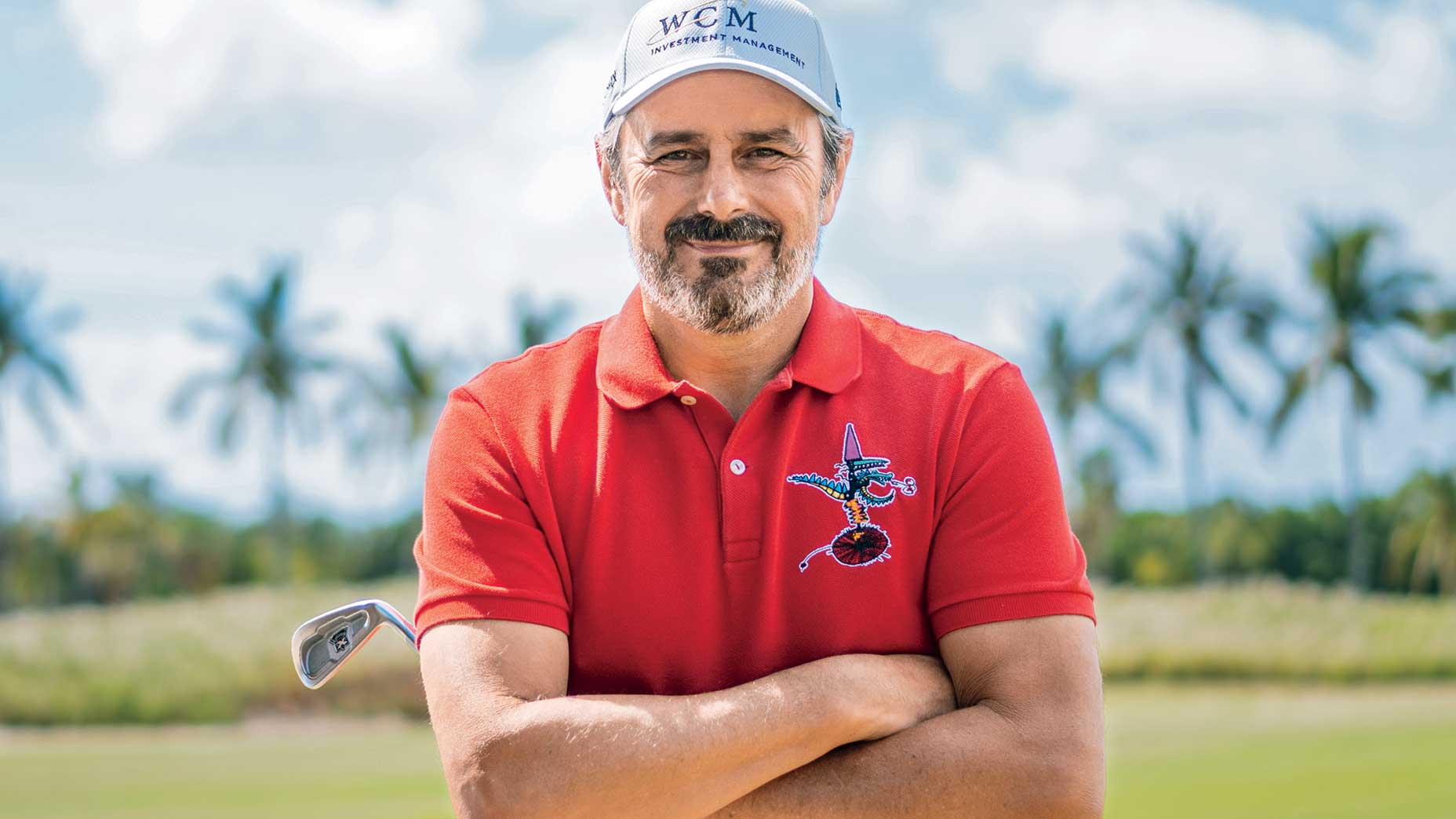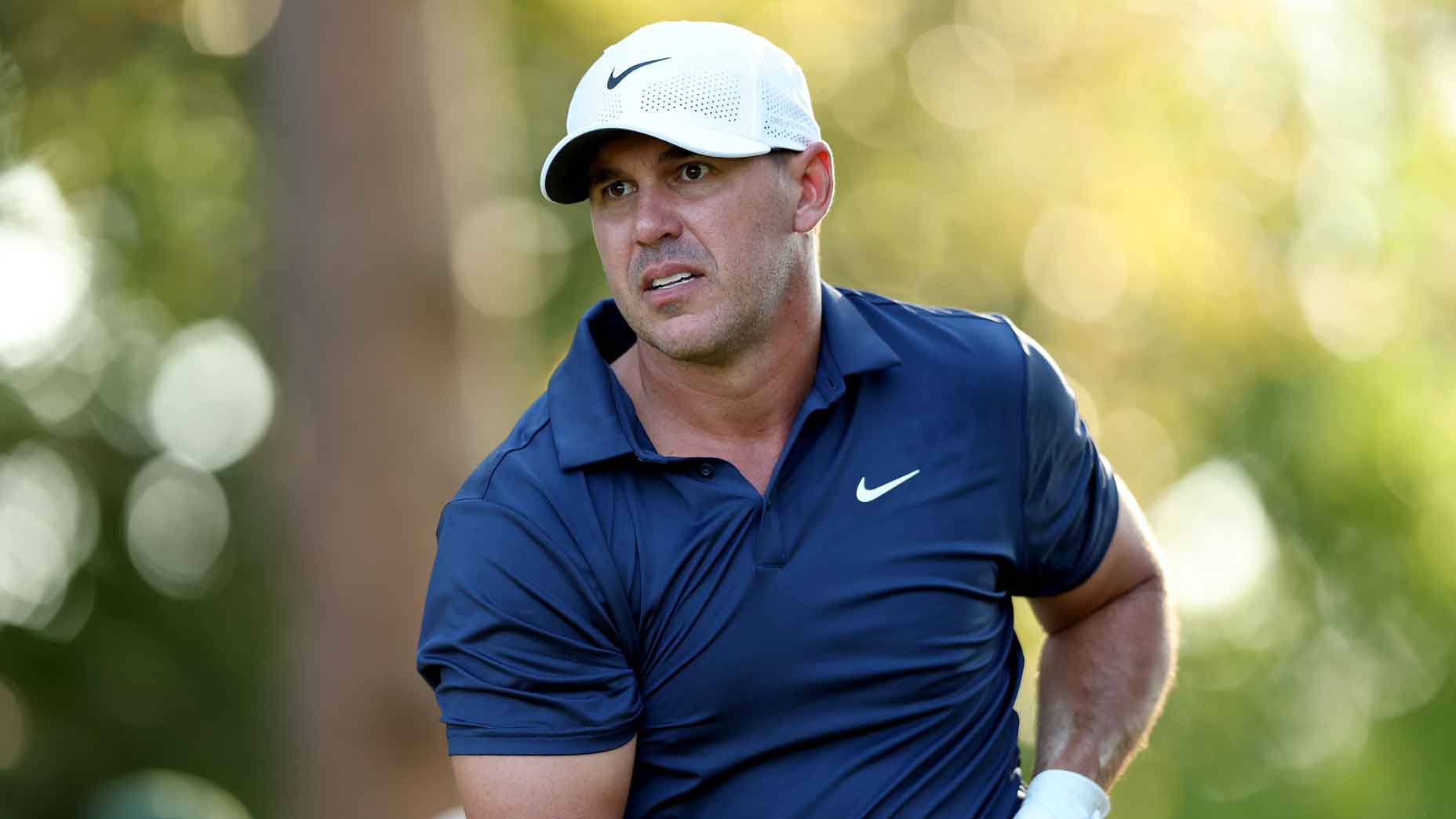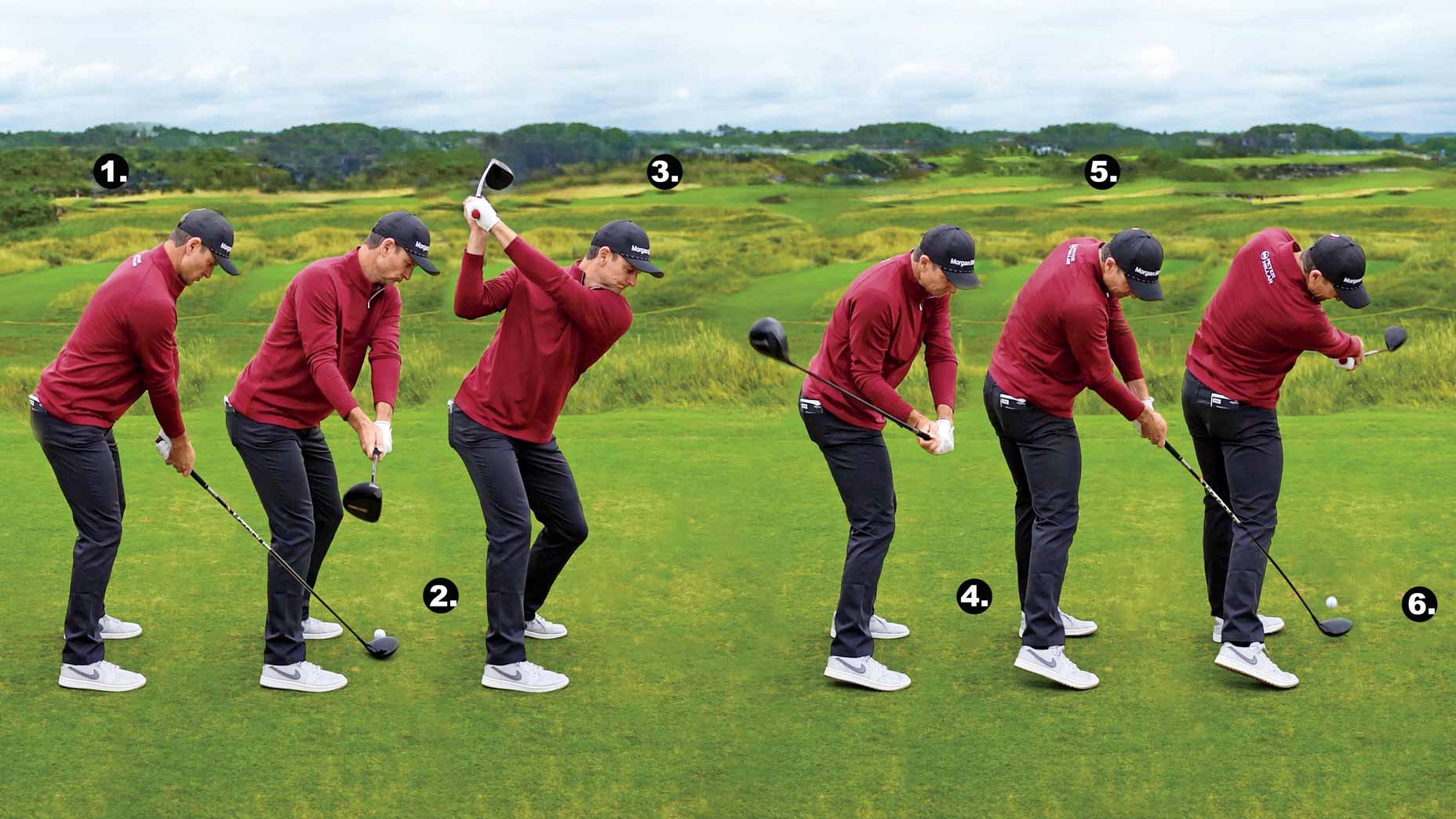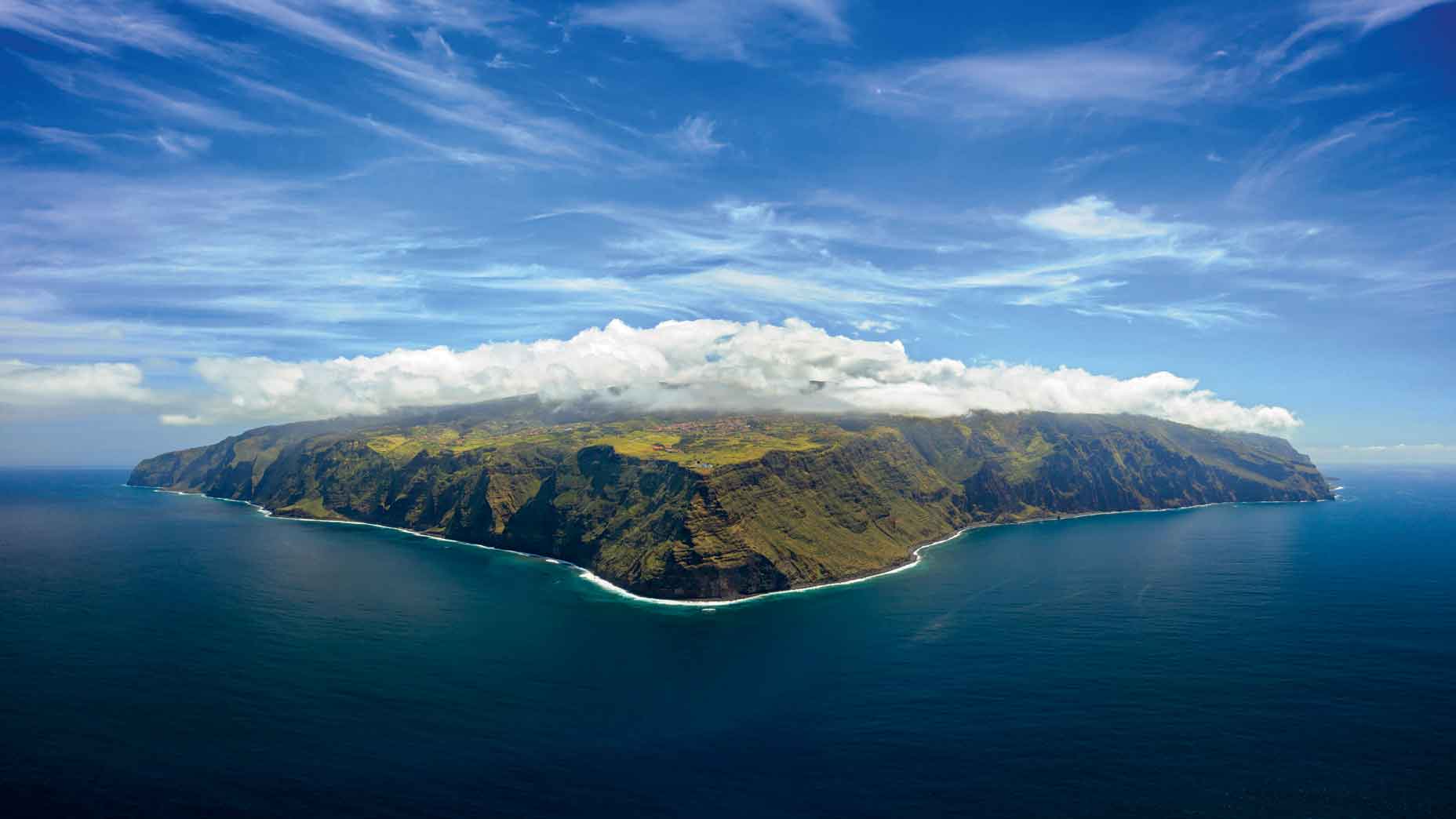There are few places in the world more serene than the oceanside resort of Punta Mita. Set on a tiny peninsula in Nayarit, Mexico, and framed on three sides by the magnificent Pacific, it is at once a hideaway, a sanctuary and a tropical paradise.
And for Jean Van de Velde, it’s just another day at the office. The former European and PGA Tour pro, a seven- time winner in his career, is now the director of instruction at Punta Mita Golf Club. By any measure, it’s a blissful gig — perhaps especially so for a guy whose name is synonymous with one of the most unforgettable and shattering meltdowns in sports history.
Maybe you’ve seen the footage.
Heading into the 72nd hole of the 1999 Open Championship at Carnoustie, Van de Velde held a three-shot lead, needing just a double-bogey 6 to secure his first-ever major title. Then disaster struck: a wayward drive right; a 2-iron approach that rattled off the bleachers, bounded off a stone wall and landed in knee-high rough; a pitch that plopped into the Barry Burn.
The image that lingers and perfectly encapsulates the calamity is of Van de Velde ankle-deep in the watery Burn, pants rolled up to his thighs and hands on hips, contemplating an impossible splash for his fourth shot. A BBC announcer, in disbelief at the then-33-year-old Frenchman’s poor decision-making and string of wild misses, finally had had enough: “This really is beyond a joke now. He’s gone gaga.”
Ultimately, Van de Velde wisely chose to take a drop and made 7 on the hole, but lost in a three-way playoff with Justin Leonard and eventual winner Paul Lawrie.
Despite his infamous runner-up finish in golf’s oldest major, he went on to represent Europe in the 1999 Ryder Cup and, in his post-playing career, achieve all kinds of unexpected wins.
Nowadays, Van de Velde’s passion for golf is channeled into his students in a little piece of heaven in coastal Mexico, where his positivity and love for the game is undimmed. On the 25th anniversary of the darkest moment of his golfing life, Jean Van de Velde sounds more than reconciled to the “blisters” and “wounds” that, in time, each of us will inevitably have to endure. We sat down with him to learn about a man who should be remembered for more than just one golf hole.
[This interview has been edited and condensed for clarity.]
GOLF: How does a 58-year-old golfer with deep roots in Europe end up in a remote paradise in Mexico? Tell us about your journey.
JEAN VAN DE VELDE: My journey? Well, that’s an interesting question. I would say that I’m, like most [professional] golfers, a citizen of the world, which means that you go right, left and center. The great thing about what we do is that you can pretty much live wherever you want, as long as you have a few rules that you respect. But if you can travel, then it’s easy. I came [to Mexico after] spending three years in Spain. I was living in Valderrama. It’s a great part of the world, but I felt a little bored or not active enough in the winter. My wife is Mexican, so I said to her, “It’s very nice here. Andalusia is beautiful. [But] I want to go and see something else. Why don’t we move to Mexico?” And she said, “Are you sure about that?” I said, “Well, yeah, let’s start in Mexico City and see what happens.” So we moved there, [but] when the pandemic arrived I came on this side of the country, on the west coast, the Pacific.
Before settling in Punta Mita, you moved around Mexico for a bit, right?
Just down from here, about three hours, one of my closest friends has a house. And he said, “Hey, the pandemic is here. They’re gonna close down pretty much all the states. We’re not gonna be able to move. Why don’t you come to my home?” So we moved into his house. [But] after four months it was time to change scenery. I knew Carl Emberson, who’s the head of marketing [at Punta Mita]. So I called him and asked, “Can I come over and spend a bit of time?” He said, “Sure, yeah, come for a couple of weeks.” And a couple of weeks turned into being here for two months. Then he said, “Hey, you live in Mexico. How about you come [to the resort] for a week and maybe you can teach and see what happens?” I already have a couple of academies back in Europe, so I said, “Why not?” That was three years ago. So this is how I arrived in Punta Mita. Despite the beauty of the place — and this is equal to none around the world, I think — what makes it special is the community. The people are just fantastic. And that’s the reason why I’ve stayed. That was a long answer. [Laughs.]

Can you walk me through a typical day in your life here?
Well, I get up always very, very early. I’m here at the golf course just before 8. I teach until 2, so I give five hours of lessons a day. By 2, usually I call it a day. I’m a pretty busy boy. I have a lot of other interests, whether it’s the other academies, my wine business, promoting golf tournaments, a little bit of architecture. And I would put TV [in there] as well. So I dedicate pretty much the middle part of the afternoon until the evening to doing what I need to do and catch up. But usually the 2 [o’clock finish] is a fantasy, because somebody wants to come and there’s, “Hey Jean, can you see me [for a lesson] at 4, at 5?” So, you know, I accommodate people as much as I can. And, to be honest, in this kind of [beautiful] surrounding, it’s — I’m not making that big an effort.
How many academies do you have?
We have three. We have one in Paris, one in Morocco and we have one here, obviously.
How often do you go to the others?
I don’t go as much to Morocco as I used to, but I try to go [to Paris] every three months to four months.
And the wine business?
I was born and raised very close to Bordeaux, and [I was] introduced to wine by my parents, my dad, from a very, very young age. I can’t even remember. But I’ve always been a wine collector, a wine drinker. So a friend of mine who owns a château and is a wine merchant came to me one day and said, “Hey, I got this idea.” We call it Wines of Golf Legends. For example, we have [a Spanish wine that] Olazábal has his name linked to. And the Chianti, we have Constantino Rocca. The German wine, we have Bernhard Langer. And then the list goes on. Laura Davies is part of it. We have Lorena Ochoa for a wine here [in Mexico]. Michael Campbell, white New Zealand wine. Ian Woosnam has a rosé from Provence. It’s all about wine lovers. It was articulated around a group of friends, and from that group of friends came the idea. We are in 65 duty-frees around the world, and we’re gonna start expanding into the golf clubs.
Do you guys convene and, you know, just drink wine together?
[Laughs.] Not enough, sadly, because we all have busy lives. But, yeah, we all drink wine, that’s for sure.
What is your relationship like with the game of golf these days? Obviously, you’re an instructor, but how did your pro career help you get to where you are? And what do you love or maybe even dislike about golf today?
Well, I love everything about the game itself: how it tests you and, mentally, how much of a challenge it is every day. What I really had enough about golf was the constant traveling and being away from home. That’s the reason why, at the end of 2010, basically I packed it up and I knew I wasn’t gonna go back. I wasn’t gonna try to play on the Champions Tour or anything. It was just, you know — I wanted to do other things. I wanted to be challenged more intellectally with different projects. In 2012, I was very lucky because I was given the opportunity to run the French Open, which, at the time, was the largest golf tournament in Continental Europe. That was a phenomenal apprenticeship, an amazing journey. So I stayed there for five years. In the meantime, we brought the Ryder Cup to France as well. It’s just… you want to grow up and push yourself in different directions. It was time. I was 45 years of age, and I decided it was time to taste, you know, other grass somewhere.
What do you think is the biggest lesson you’ve taken from golf and applied to your career in general?
Well, I think that what golf makes you, above probably anything, is very resilient and hard-working. And you don’t take no for an answer. You might fail many times, but you get up and you try again. So we all have, you know, blisters, wounds. We’ve all been, somewhere along the way, damaged a little bit. But damaged in the right way, you know? If you take it too personally — I can refer to personal experiences in golf that have been pretty emotional. But I think you gotta see beyond; you gotta concentrate on the journey more than the outcome. So, for me, all those new projects are very exciting. Yes, there’s a little bit of a misdirection [in life] sometimes, but, for me, as a person, as a human being, it’s all about growing. So, yeah, I like what I do.
I was going to ask, are you happy with where you are today? But I think I have your answer.
Yeah, no, I’m very happy. Golf has given me everything that I have. And now [through teaching] it’s about communicating to others. The mechanics is something that you can get, but trying to find the words, the right image that is gonna translate for that person is a different thing. On top of it, you need to consider that some people — biomechanically and physically, there’s a few things they can’t do. So how do you push somebody in the direction that you believe could be right? That’s, for me, where the challenge is. But it’s very enriching in that way — if there is some kind of improvement, you can see it in their face, you can see how happy they are. That’s what it is: All the people who come here, we have the same passion. We maybe [don’t] play at the same level, but we have the same passion, and that’s something great.
How often do you get out on the course yourself?
Next question. [Laughs.] I don’t remember the last time I played golf on the course. If I play a few holes every two weeks, that would be the max.
Is there anything left in the game that you still want to accomplish?
Definitely. I mean, with the academy, without a doubt. And with the [professional] game itself, I commentate [for French broadcaster Canal+]. Six weeks a year, I do the majors, the Ryder Cup or Presidents Cup and the Players. I first started in 2002, so I’ve been going on for 23 years.
Overall, it’s been a long and sometimes strange trip for you. What do you hope the future holds?
That I’m gonna grow older in a healthy way and still be surprised and amazed with things. It’s about having the right challenges, pushing myself and not being stuck in my own ways, thinking that because you get older you know better. I don’t function this way. It’s about knowing that sometimes it goes your way and sometimes it doesn’t. And that’s all right.











